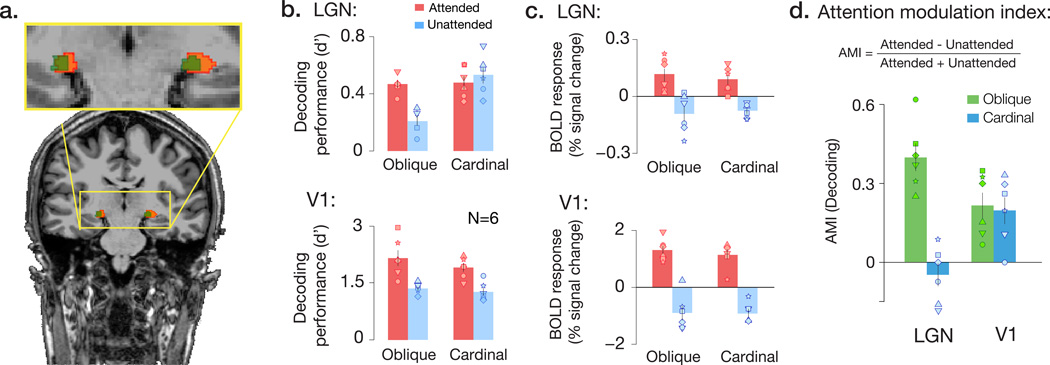Figure 1.
Attention selectively augments orientation representation in the human LGN. a) LGN region of interest in a representative subject, identified by the intersection (green) of functional localizers (orange) and proton density-weighted structural imaging (blue). b) Accuracy of orientation decoding (d’ units) for multivariate activity patterns in LGN and V1, for attended and unattended gratings. Attention led to enhanced orientation-selective responses in V1 for all orientation conditions, whereas in the LGN only oblique orientations were modulated by attention. Oblique and cardinal orientation pairs were tested on different scan sessions. Individual points correspond to individual subjects. A non-parametric permutation test confirmed that V1 decoding performance fell outside of the 95% CI bounds of the null distribution in all conditions for every individual participant (24/24 cases), and that LGN decoding performance fell outside of the bounds of the null in 12/12 cases in the attended condition, and 9/12 cases for the unattended condition. c) Attention had comparable effects on mean BOLD activity across orientations, in both the LGN and V1. BOLD response was normalized by the mean intensity across the time series for each run. d) Attentional modulation indices (AMI) for decoding performance of oblique (green) and cardinal (blue) orientations, in LGN and V1. Higher positive values indicate larger effects of attention. Whereas attentional modulation was comparable for cardinal and oblique orientations in area V1, attention selectively modulated responses to oblique orientations in the LGN. Error bars denote ±1 s.e.m.

